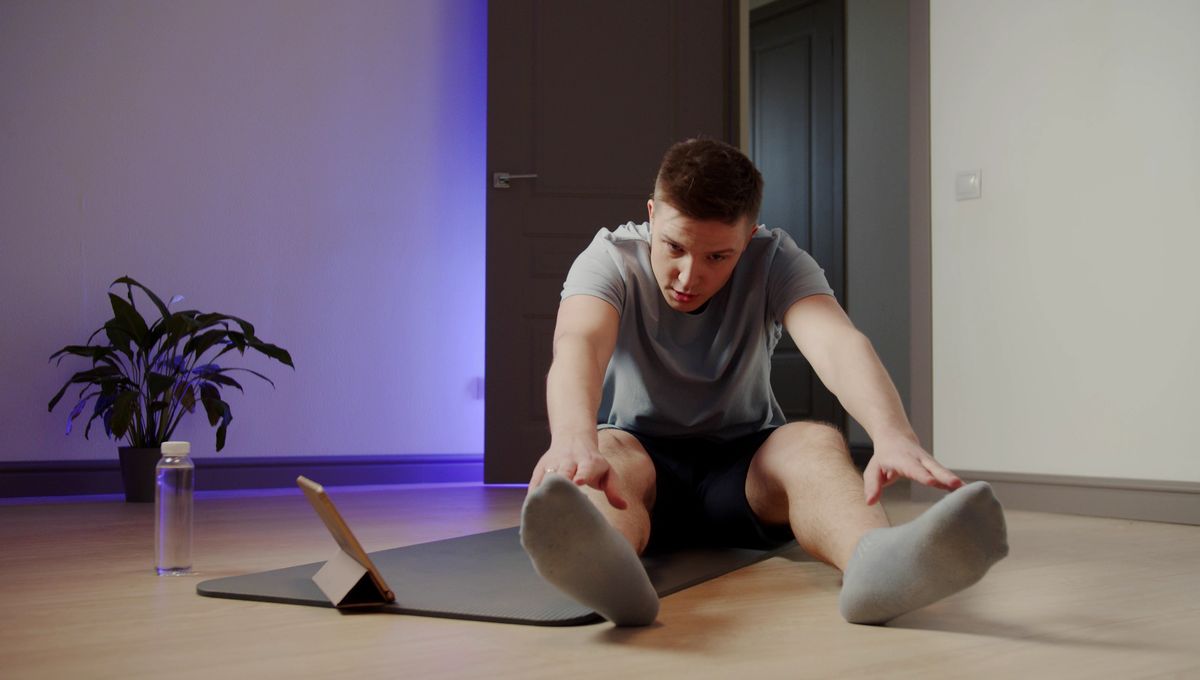
Let’s try something – sit down on the floor with your knees locked and your legs straight out. Keeping your back straight, are you able to lean forward and touch your toes? Nope? You’re not the only one – but why is it that some people can touch their toes while others can’t?
Flexibility is important…
ADVERTISEMENT GO AD FREE
One of the major reasons why someone might not be able to touch their toes comes down to flexibility, specifically of the hamstrings – the group of three muscles that run down the back of the thigh (and which soccer players always seem to pull) – and those in the lower back.
“The shorter distance you can reach, the greater the tightness in the low back and hamstrings,” certified athletic trainer Patricia Cordeiro told Harvard Health Publishing.
The good news is that, if this is the reason why you can’t touch your toes, there might be something you can do about it. Activities such as yoga and stretching routines can help loosen your muscles up – though it’s important not to push yourself to the point of being in pain. Tearing a muscle isn’t going to have you feeling very flexible.
…but it’s not everything
While the ability to touch your toes is often perceived as a measure of fitness or flexibility – and sure, those things are important to have – not being able to touch your toes doesn’t automatically mean you’re horrendously unfit or inflexible. You could be a marathon runner and still not be able to touch your toes. Sometimes, it’s just how your body is built.
“[T]he other big factor is the relative length of your arms and your torso to your legs,” Jeffrey Jenkins, a physiologist at the University of Virginia School of Medicine, explained to Popular Science.
“[S]omeone can be really flexible, but if their arms and hands are short relative to their legs, then even at their maximum flexibility they might still not be able to touch their toes, because their arms and fingers aren’t long enough to reach.”
ADVERTISEMENT GO AD FREE
So, the next time you have one of those shudder-inducing 3 am flashbacks to grade school gym class and the Presidential Fitness Test, take comfort in the fact that you might not have failed the sit-and-reach section because you were unfit – you could just be lanky-legged and short-armed.
Plus, being able to touch your toes isn’t the be-all and end-all of flexibility; it can be a helpful indicator, but it’s not necessarily worth getting caught up on. While flexibility can help improve your ability to carry out physical tasks, keep your joints and muscles working nicely, and reduce the risk of injury, there’s more to it than giving your toes a cheeky tap.
As Hospital for Special Surgery physical therapist Amanda Sachdeva explained to HuffPost: “Just simply bending forward and touching your toes, we don’t do that movement that often during the day, so we don’t necessarily need the capacity to do that exact [movement].”
All “explainer” articles are confirmed by fact checkers to be correct at time of publishing. Text, images, and links may be edited, removed, or added to at a later date to keep information current.
ADVERTISEMENT GO AD FREE
The content of this article is not intended to be a substitute for professional medical advice, diagnosis, or treatment. Always seek the advice of qualified health providers with questions you may have regarding medical conditions.
Source Link: Why Can’t Everyone Touch Their Toes?